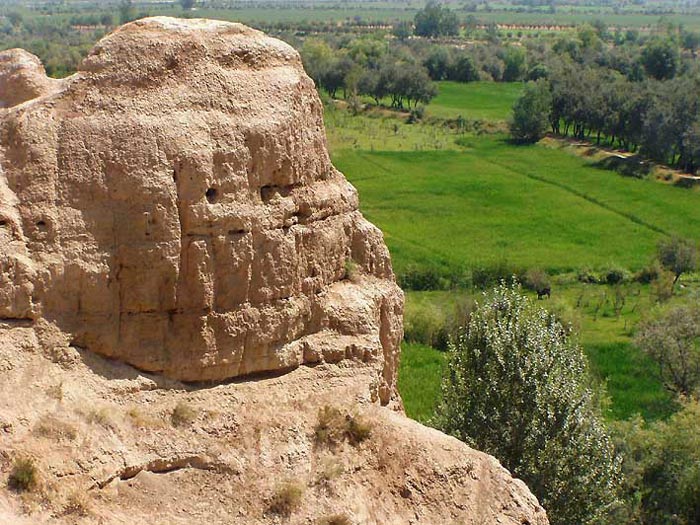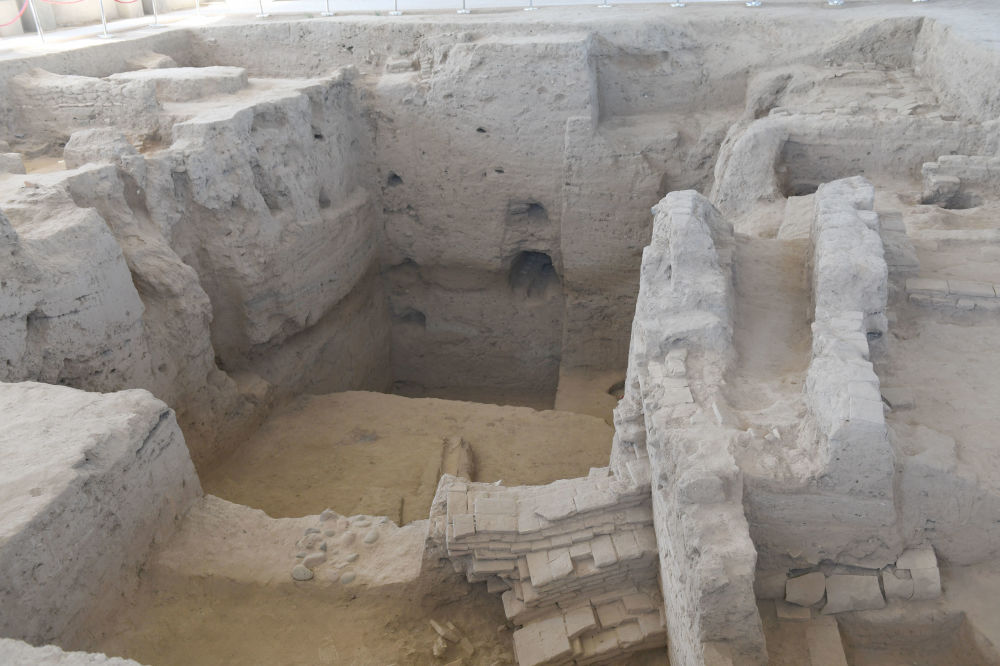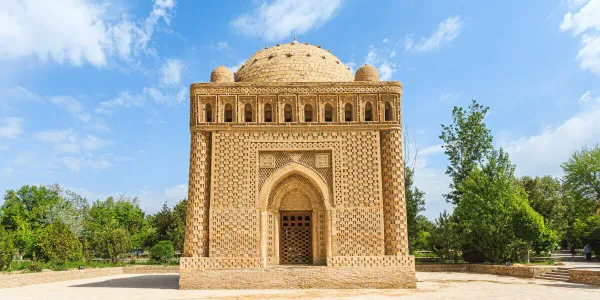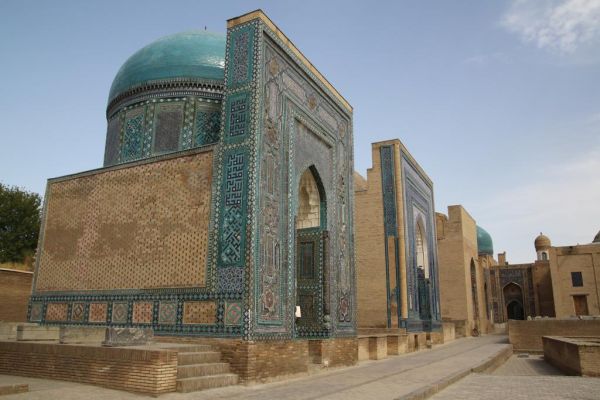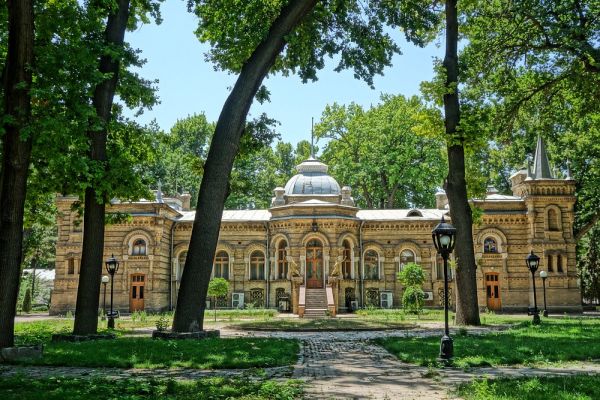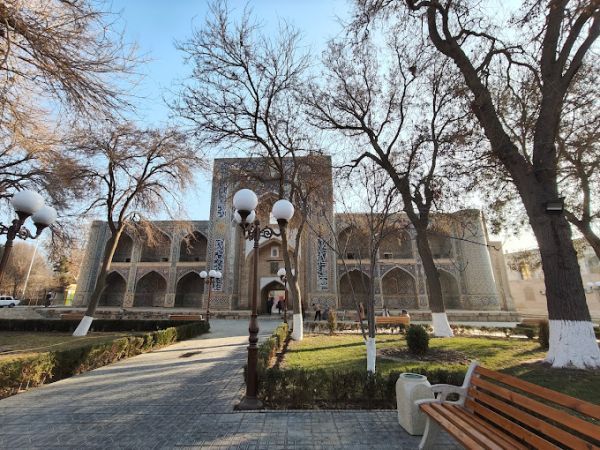The ancient settlement of Aksikent
"There is no other impregnable fortress in Ferghana. The suburbs there stretch more than a sherry from the fortress," Zahiriddin Muhammad Bobur, a descendant of Amir Temur, the conqueror of India and founder of the Mughal dynasty, wrote on the pages of Bobur–nam. The ancient fortified residence of the Ferghana rulers, Aksikent, or Aksi, as it was then called, was built on an elevation at the confluence of the Kasansai and Syr Darya rivers. During the time of Bobur, Aksi was the second largest city in the Ferghana Valley. Time and natural disasters have not spared him, and now, twenty kilometers southwest of Namangan, the ruins of Axikent are hidden under the grandiose clay hills.
As archaeologists have established, a fortified settlement with a citadel called "Akhshi" or "Akhsi" arose here as early as the 3rd century BC as part of the Davan state in the Ferghana Valley. In the vicinity of Ahsi, as in the entire valley, war horses were bred, "sweating blood" – the object of lust of the Chinese emperors. More than once, a war broke out for the possession of winged steeds. The historian Sima Qian in the chronicle "Shi Ji" reports that in 103 BC, the commander Li Guangli with an army of sixty thousand men besieged Aksikent for forty days, cutting off access to drinking water in the city. But there were wells in the fortress, and its defenders held out until troops from the friendly kingdom of Kangyu came to their aid.
At the beginning of the first millennium AD, the cities of the Ferghana Valley were subjugated first by the Kushan kings, then by the Turks, but it was at this time that Aksikent became the economic center of the country. Trade caravans from Kashgar and China, Asia Minor and Byzantium gathered here. Local fabrics, ceramic and metal products were highly valued in international markets. Aksikent consolidated its importance after the conquest of the Fergana Valley by the Arabs and became its capital. If the most ancient ancient Axis had a perimeter of only about two kilometers, in the VIII–IX centuries, according to the medieval chronographer and geographer Maxidi, it was a large city surrounded by a wall eighteen kilometers long and had five gates. Excavations revealed that there was a citadel with a magnificent palace and prison in Axikent, and a cathedral mosque and baths in Shahristan. There was a square for festive prayer on the banks of the Syr Darya. The walled and towered suburb of Rabada had bazaars and craft workshops. Coins minted in Axikent in the 9th–11th centuries were found in the ruins.
Since 2002, the ruins of the ancient and pre-Mongol Axikent have been explored by an Uzbek-British archaeological expedition led by Professor T.Rechren. Scientists have discovered refractory crucibles made of kaolin in the excavations of artisan quarters. Such crucibles could withstand temperatures up to 1300 degrees, and the fuel for the melting furnaces of the Aksikent metallurgists was archie wood, which gives a very high temperature during combustion. Such conditions are necessary for the smelting of steel with a high carbon content from iron ore, which is so rich in the surrounding slopes of the foothills of the Tien Shan. After skillful forging, it acquired exceptional strength, flexibility and a characteristic patterned pattern, that is, it became the steel that is known as "Damascus". It is not for nothing that the Arab chronicles of the tenth century reported that "iron weapons from Ferghana were in general use from Khorasan to Baghdad." A British archaeologist suggested that not only blades were exported from Axikent, but also steel, which traveled along the Great Silk Road to Damascus, where local gunsmiths forged swords and sabers that became popular not only in the East, but also in Europe.
At the beginning of the 13th century, Aksikent was raided by the Karakitais, and in 1228 Genghis Khan's commander Jebe Noyon captured the Fergana Valley. The ruler of Axikent and Kasan, Ismail, expressed submission to the conquerors and even became the guide of the Mongols in their campaign against Samarkand. However, the plundered and destroyed city fell into disrepair. It was only during the reign of Amir Temur that the city was rebuilt a few kilometers downstream of the Syr Darya River to the west of the pre-Mongol Aksikent. The Temurid-era axient occupied an area of about one hundred hectares on a high, steep riverbank. Although it lost its status as the capital of Ferghana, it remained the largest trade and craft center, as evidenced by numerous finds of glass, metal and ceramic products. And the newly rebuilt citadel, surrounded by a moat, and the palace were the favorite residence of the rulers of the Fergana inheritance.
Axikent was wiped off the face of the Earth in 1620 by a devastating earthquake. The survivors of the disaster moved to the northeast to the village of Namakkon near the salt mines, which today is known as a large city, the regional center of Namangan.
The ruins of the Axicent citadel seem to be a creation of nature, not human hands. Traces of the brickwork of once magnificent buildings are barely discernible. From the collapsed fortress walls, as thousands of years ago, there is a view of the shores of the Syr Darya, surrounded by greenery of gardens and groves.
